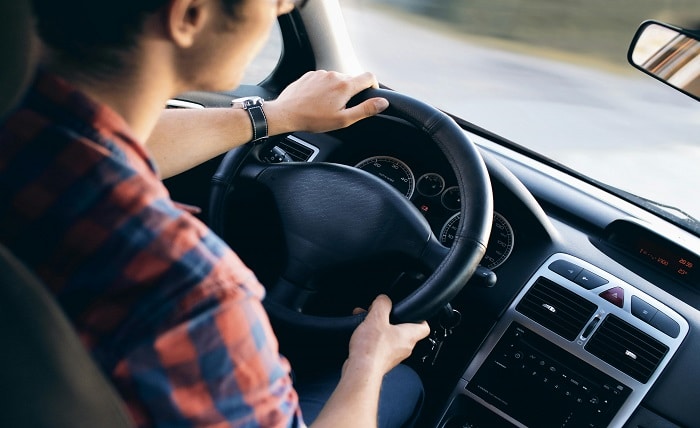Teenage Involvement in Car Crashes and the Complexities of Liability

Teenagers behind the wheel can be a cause for concern for both parents and society at large. With their burgeoning independence comes a heightened risk on the roads.
Car crashes involving teenage drivers not only pose immediate safety concerns but also raise complex legal questions surrounding liability. Understanding these intricacies is crucial for navigating the aftermath of such incidents and ensuring appropriate accountability.
In this article, we will dive into the issue of teenage involvement in car crashes. We will explore the legal complexities of liability and provide insights into jurisdiction-specific considerations.
The Teenage Driving Dilemma
Teenage drivers face a multitude of risk factors that contribute to their involvement in car crashes. One significant factor is their lack of driving experience. Unlike seasoned drivers, teenagers are still honing their skills on the road, making them more prone to errors and misjudgments.
Additionally, teenagers tend to engage in risky behaviors such as speeding, distracted driving, and driving under the influence of drugs or alcohol. Peer influence also plays a significant role, as teenagers may succumb to peer pressure to engage in reckless driving practices.
According to the CDC, teenage drivers exhibit higher rates of speeding and following vehicles at shorter distances compared to older drivers. These risky driving behaviors are particularly pronounced when there is a male teenage passenger in the vehicle.
Moreover, adolescents’ cognitive development, particularly in areas related to impulse control and decision-making, is still ongoing, further increasing their susceptibility to accidents.
Establishing Liability in Teen-Related Car Accidents
Establishing liability in car crashes involving teenagers hinges on various legal principles. One such principle is negligence, which requires demonstrating that the teenage driver breached their duty of care towards other road users. This breach could manifest in various forms, such as disobeying traffic laws, driving recklessly, or failing to exercise reasonable caution.
Duty of care extends not only to other motorists but also to pedestrians, passengers, and property owners. Contributory negligence may also come into play, wherein the actions of other parties contribute to the accident. Courts assess the actions of all involved parties to determine each party’s degree of fault and apportion liability accordingly.
Exploring the Role of Guardians in Teen Driver Accidents
Parents play a crucial role in shaping their teenagers’ driving behaviors and may bear legal responsibility for their actions on the road. According to legal-info.lawyers.com, parental liability often stems from negligent supervision or entrustment. Negligent supervision occurs when parents fail to adequately supervise their teenage drivers, allowing them to engage in risky driving behaviors.
Entrustment refers to situations where parents knowingly permit their inexperienced or incompetent teenage children to operate a vehicle. In some jurisdictions, parental liability laws hold parents financially responsible for damages caused by their teenage children’s negligent driving.
Legal Recourse for Victims
Victims of car crashes involving teenage drivers have the legal right to seek compensation for their injuries and damages. They may pursue compensation through various avenues, including filing a personal injury lawsuit against the at-fault driver or their insurance company.
Compensation may cover medical expenses, lost wages, pain and suffering, and property damage. However, navigating the legal process can be complex, requiring the expertise of a skilled personal injury attorney. Victims must adhere to statutory deadlines for filing claims and gather compelling evidence to support their case.
Jurisdiction-Specific Insights
In the United States, each state has its own set of laws and regulations governing teenage driving and liability in car crashes. Arkansas, for instance, implements a graduated driver licensing (GDL) program aimed at gradually introducing young drivers to the responsibilities of driving while minimizing risks. Under Arkansas’ GDL program, teenagers must progress through several stages before obtaining full driving privileges.
During the learner’s permit stage, which typically begins at age 14, teenagers are required to complete a state-approved driver education course. They must then hold the learner’s permit for at least six months before advancing to the intermediate license stage.
Arkansas’ intermediate license stage, available to drivers aged 16, comes with certain restrictions. For example, Justia notes that intermediate license holders in Arkansas are prohibited from driving between 11:00 PM and 4:00 AM. This restriction applies unless they are accompanied by a licensed adult over 21 years old. Additionally, they are not allowed to have more than one unrelated passenger under 18 in the vehicle.
In Arkansas, certain cities, like Rogers, witness higher rates of car accidents compared to others. Rogers, situated in the northwest region of the state, experiences a significant volume of traffic due to its growing population and thriving economic activity. As a result, congested roadways, coupled with factors like distracted driving and speeding, contribute to an increased likelihood of car accidents in the area.
In personal injury cases arising from car crashes in Rogers, seeking legal representation from a knowledgeable Rogers car accident lawyer is invaluable. These legal professionals specialize in navigating the intricacies of automobile crash cases and are well-versed in handling cases specific to the Rogers area.
According to Keith Law Group, these lawyers possess a deep understanding of local traffic laws and court procedures. This allows them to effectively advocate for their clients’ rights. With their expertise, they can pursue maximum compensation for their injuries and damages.
Promoting Safe Driving Practices
Efforts to mitigate the risks associated with teenage driving extend beyond legal considerations. Education and prevention initiatives are critical in promoting safe driving habits among young motorists. These initiatives may include driver education programs, defensive driving courses, and awareness campaigns targeting teenagers and their parents.
Additionally, implementing technological solutions such as vehicle tracking devices and smartphone apps can help monitor and improve teenage driving behaviors. By investing in education and prevention efforts, stakeholders can work towards reducing the incidence of car crashes involving teenagers.
FAQs
Which age group has the most car accidents?
Statistically, young drivers aged 16-20 have the highest rate of car accidents, largely due to inexperience and risk-taking behavior. However, older drivers aged 65 and above have a higher risk of fatal crashes due to factors like decreased reaction time and medical conditions.
What is the most important thing for safe driving?
The most important thing for safe driving is attentiveness. Maintaining focus on the road, obeying traffic laws, anticipating hazards, and avoiding distractions like smartphones are crucial. Alertness allows drivers to react promptly and make informed decisions, preventing accidents.
Is a hit-and-run a felony in Arkansas?
Yes, in Arkansas, a hit-and-run can be charged as a felony. Depending on the circumstances and severity of the incident, it may result in significant penalties, including fines, license suspension, and imprisonment.
In conclusion, teenage involvement in car crashes underscores the importance of comprehensive approaches to address both legal complexities and societal concerns. Through understanding liability dynamics, parental roles, and jurisdiction-specific regulations, we pave the way for promoting safer driving practices among young motorists.
By integrating education, prevention initiatives, and legal recourse, we can effectively mitigate risks associated with teenage driving. Collaborative efforts among stakeholders, including parents, legal professionals, and policymakers, are vital for fostering awareness and implementing targeted interventions.
Together, we can work towards a future where roads are safer for all. This will ensure the well-being of drivers and communities alike.




